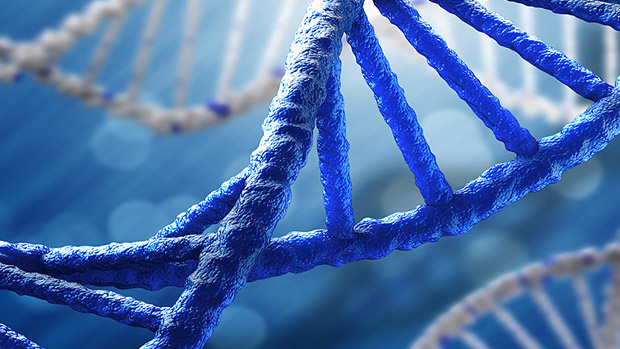- Messages
- 2,405
- Reaction score
- 1,431
- Points
- 113
This food actually accounts for longer telomeres and prevents biologic aging and the diseases that come with it.

What Are Telomeres?
Telomeres are the specialized stretches of DNA at the end of chromosomes. The way they're always described is that they're like the aglets, or plastic tips, at the end of shoelaces. And just as the plastic tips keep shoelaces from fraying, telomeres keep the ends of chromosomes from fraying or sticking.The trouble is, each time a cell divides, the telomeres get shorter. When they're too short, the cell can no longer divide and the cell goes dormant or dies. This shortening process is associated with aging, cancer, and a higher risk of death in general.
As you might guess, longevity scientists are always trying to figure out how to preserve telomere length, often going to great lengths to investigate chemical or lifestyle interventions. But in a mind-blowing new study, scientists have found that one of the most basic – but often neglected – dietary components can actually prevent telomeres from shortening.

The dietary component is plain old fiber, and the study found that for each 1-gram increment in fiber intake per 1,000 calories of food eaten, telomeres are 83 base pairs (complimentary nucleotides that make up a strand of DNA) longer.
That means that simply eating more fiber equates to significantly fewer years of biologic aging. That's amazing.
What They Did
During the years 1999 to 2002, scientists collected 5,674 DNA samples from a broad spectrum of U.S. men and women, age-wise, race-wise, and even income-wise. All were required to provide complete data on such factors as body mass index, energy intake, physical activity, alcohol and tobacco use, and fiber intake.While the DNA samples were collected between 1999 and 2002, it wasn't until 2014 that the telomere data became available to the public.
What They Found
Fiber intake was linearly related to the telomere length of leukocytes, and adults that had higher fiber intake had longer telomeres than their counterparts, suggesting less biologic aging.On average, every year of chronological age shortens telomeres by 15.5 base pairs, but the inclusion of 10 grams of fiber per 1,000 kcal corresponds with telomeres that were 83 base pairs longer. On average, this would equate to 5.4 fewer years of biological aging.
What This Means to You
This means that dietary fiber has a significant effect on health and aging, far more than we realized. A high-fiber diet quells oxidative stress and inflammation, and both play a big part in aging.A high fiber diet also seems to reduce C-reactive protein levels and glucose levels, both of which can affect health and longevity. Furthermore, diseases like heart disease, stroke, Type 2 diabetes, and breast cancer also happen less frequently in people with a high fiber intake.
The researchers, in trying to figure out how fiber does what it does, made the observation that "...consumption of specific nutrients rarely occurs in isolation." What they meant was that people who ate a lot of fiber probably got most of that fiber from fruits, vegetables, and whole grains, which in themselves (because of polyphenols and carotenoids) confer health and longevity.
That's undoubtedly true, but it's probably not the only factor. One thing the researchers neglected to consider was the effect fiber has on the human microbiome. Many beneficial bacteria subsist on fiber, thus ensuring our immune systems are in good working order and thus providing a whole cascade of positive health benefits.
Some Fiber Guidelines

U.S. dietary guidelines recommend that Americans ingest 14 grams of fiber per 1,000 kcal of food ingested. That means that if you ingest around 3,000 calories a day, you'd do best taking in 42 grams of fiber. Fewer than half of Americans get that much fiber, though.
It's worth noting that in the telomere/fiber study, their calculations were based on fiber intake of only 10 grams per 1,000 kilocalories of food. Even so, whichever number you may want to shoot for, 10 or 14 or some number in the middle, probably seems daunting. It shouldn't, though. There are plenty of easy ways to load up on fiber.
Consider this sample diet from WebMD. It provides 37 grams of fiber:
- Breakfast: One serving of whole-grain bran flake cereal (5 grams of fiber), topped with half a sliced banana (1.5 grams of fiber) and skim milk.
- Morning snack: 24 almonds (3.3 grams of fiber) mixed with a quarter cup
of raisins (2 grams of fiber). - Lunch: Turkey sandwich made with 2 slices of whole wheat bread, plus lettuce
and tomato (about 5 grams of fiber total), and an orange (3.1 grams of fiber). - Afternoon snack: Yogurt topped with half a cup of blueberries (2 grams of fiber).
- Dinner: Grilled fish served alongside a salad made with romaine lettuce,
shredded carrots (2.6 grams of fiber), plus half a cup of cooked spinach (2.1 grams of fiber), and half a cup of lentils (7.5 grams of fiber). - After-dinner treat: 3 cups popped popcorn (3.5 grams of fiber).

